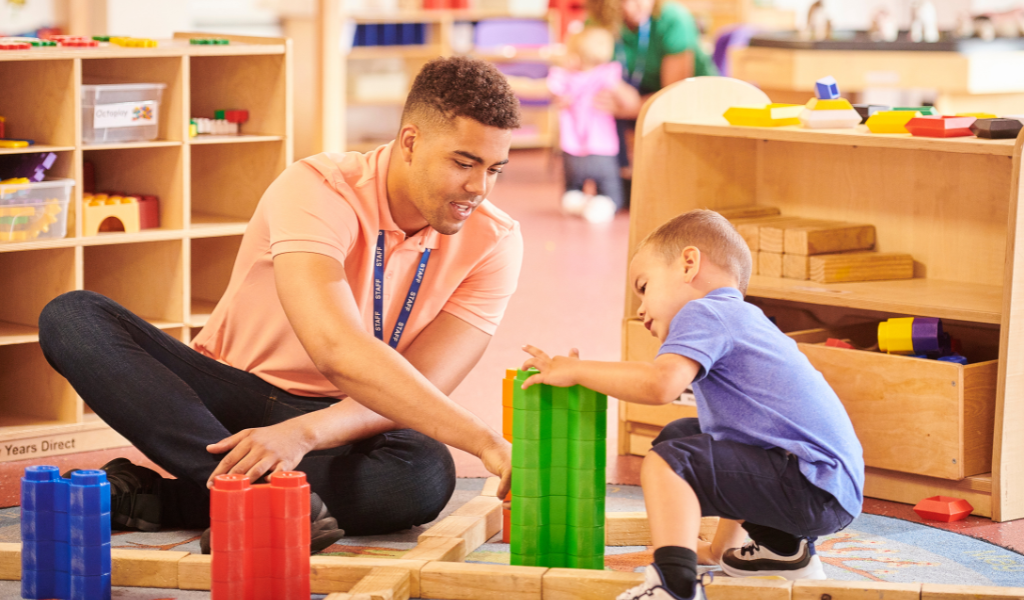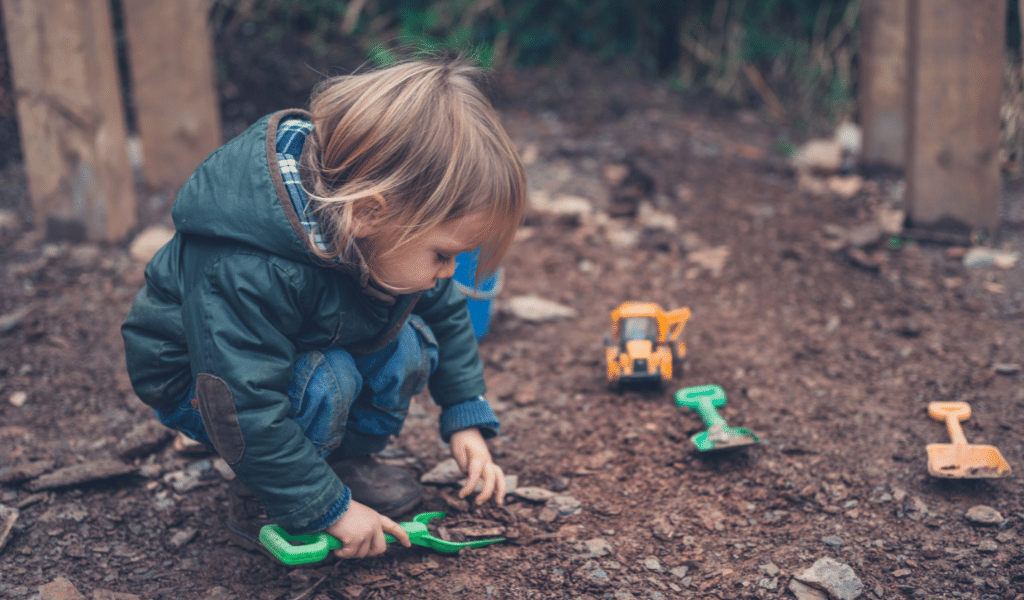The changes from September 2025 are being made to strengthen the EYFS safeguarding requirements. To help you get your head around them, we’ve asked our in house expert Rebecca Martland to summarise the key content below:
Oh! and do join us on a webinar end of July so you get up to speed and ready for September! Just click on the image below to register – it’s free!
Rebecca Martland – Safeguarding Updates Sept 2025
Suitable people – safer recruitment and references
- Safeguarding policies must include procedures to check the suitability of new recruits and record specific information as part of the setting’s safer recruitment processes, including qualifications, identity checks and vetting. This also applies to childminders who are employing assistants
- Providers must obtain a reference from the applicant’s current employer (or training provider) before employment commences
- References should be provided by employers in a timely manner, confirming whether they are satisfied with their employee’s suitability to work with children and provide the facts regarding any substantiated safeguarding concerns/allegations
Child absence
- Providers/Childminders must follow up on absences in a timely manner, including if a child is absent for a prolonged period of time, or absent without notification from the parent or carer. In such cases attempts must be made to contact the child’s parents and/or carers and alternative emergency contacts, with settings holding more than two emergency contact numbers for each child if possible
- Providers/Childminders must have an attendance policy that they share with parents/carers, which must include reporting child absences, and the actions they will take if a child is absent without notification or for a prolonged period of time

Safeguarding policies and procedures
The wording in the EYFS will be changed from ‘lead practitioner’ to ‘designated safeguarding lead’ and relevant paragraphs under safeguarding policies and procedures will be updated for clarification of the DSL role.
Ratios
The statement regarding the inclusion of students on long term placements and volunteers (aged 17 or over) and staff working as apprentices in early education (aged 16 or over) the qualified ratios at the level below their level of study, if deemed competent and responsible has been amended to clarify that they must also hold a valid and current PFA qualification.
In reference to level of study, for ratio purposes:
- Level 2 students can only be counted in ratio as unqualified
- Full & relevant (as per the Government qualification list) Level 3, 4, 5 & 6 (undergraduate degree) students can be counted as L2 (if they have Level 2 or equivalent English qualification and a PFA certificate)
- Students undertaking EYITT (EYT) or QTS accreditation can be counted at Level 3
Food and drink facilities
This wording has been added, following the case of Oliver Steeper and other children who have choked in their childcare setting and sadly died.
- Whilst children are eating there should always be a member of staff in the room with a valid paediatric first aid certificate
- Before a child is admitted to the setting the provider/Childminder must obtain information about any special dietary requirements, preferences, food allergies and intolerances that the child has, and any special health requirements, which must be shared with all staff involved in the preparing and handling of food.
- Providers/childminders must be clear about who is responsible for checking that the food being provided meets all the requirements for each child.
- Providers/Childminders must ensure that all staff are aware of the symptoms and treatments for allergies and anaphylaxis, the differences between allergies and intolerances and that children can develop allergies at any time, especially during the introduction of solid foods
- Providers/Childminders must have ongoing discussions with parents and/or carers about the stage their child is at in regard to introducing solid foods, including to understand the textures the child is familiar with
- Providers/Childminders must prepare food in a suitable way for each child’s individual developmental needs
- Babies and young children should be seated safely in a highchair or appropriately sized low chair while eating
- Children must always be within sight and hearing of a member of staff whilst eating.
- Where possible, staff should sit facing children whilst they eat so they can make sure children are eating in a way to prevent choking and so they can prevent food sharing and be aware of any unexpected allergic reactions.
- When a child experiences a choking incident that requires intervention, providers should record details of where and how the child choked and parents and/or carers made aware

Toilet and intimate hygiene
The consultation responders had mixed views on this subject and the government response reflects the concerns raised. The new wording states that Providers/Childminders ‘must ensure children’s privacy is considered and balanced with safeguarding and support needs when changing nappies and toileting’. In the response it is suggested that in some cases, such as for lone childminders, this may mean meeting the requirement by the adult using themself or a privacy screen to shield a child and maintain their privacy while still ensuring adequate supervision and safety for other children.
Whistleblowing
A new section has been added to strengthen the EYFS references to whistleblowing.
- Providers/Childminders must put appropriate whistleblowing procedures in place for staff to raise concerns about poor or unsafe practice in the setting’s safeguarding provision, including when and how to report concerns and the process that will be followed after staff report concerns.
- Providers/Childminders must ensure staff are aware of the setting’s whistleblowing procedures and must ensure all staff feel able to raise concerns about poor or unsafe practice and know that such concerns will be taken seriously by the senior leadership team.
- Where a staff member feels unable to raise an issue with their employer, or feels that their genuine concerns are not being addressed, other channels are open to them
- E.g. NSPCC whistleblowing helpline; Ofsted; Govt guidance
Safeguarding training: Annex C
Training requirements for staff (including childminder assistants) and designated safeguarding leads (including childminders) will be set out in a new annex, in a similar way to the current annex for paediatric first aid requirements. His training must be renewed every 2 years, plus refresher training in between if needed.
All practitioners including DSLs
The safeguarding training must cover the following areas:
- What is meant by the term safeguarding.
- The main categories of abuse, harm and neglect.
- The factors, situation and actions that could lead or contribute to abuse, harm or neglect.
- How to work in ways that safeguard children from abuse, harm and neglect
- How to identify signs of possible abuse, harm and neglect at the earliest opportunity. These may include:
- Significant changes in children’s behaviour.
- decline in children’s general well-being.
- Unexplained bruising, marks or signs of possible abuse or neglect.
- Concerning comments or behaviour from children.
- Inappropriate behaviour from [practitioners/childminders and assistants or household members], or any other person working with the children.
- Any reasons to suspect neglect or abuse outside the setting
- How to respond, record and effectively refer concerns or allegations related to safeguarding in a timely and appropriate way.
- The setting’s safeguarding policy and procedures.
- Legislation, national policies, codes of conduct and professional practice in relation to safeguarding.
- Roles and responsibilities of [practitioners/childminders and assistants] and other relevant professionals involved in safeguarding.
Training for the DSL must cover
- Local child protection procedures and how to liaise with local statutory children’s services agencies and with the local safeguarding partners to safeguard children.
- How to refer and escalate concerns
- How to manage and monitor allegations of abuse against other staff.
- How to ensure internet safety.
Useful links
Keeping Children Safe in Education https://www.gov.uk/government/publications/keeping-children-safe-in-education–2
Early Years Inspection Handbook https://www.gov.uk/government/publications/early-years-inspection-handbook-eif
Safeguarding Consultation Response https://www.gov.uk/government/consultations/early-years-foundation-stage-eyfs-safeguarding
Early Years Approved Qualifications https://www.gov.uk/guidance/early-years-qualifications-finder
Attend our next webinar and stay on top of all the challenges coming up in September:
Rebecca Martland – Safeguarding Updates Sept 2025
About the author
Rebecca Martland is an early years trainer, consultant, author and 4-times Ofsted ‘outstanding’ registered childminder, with over 20 years’ experience in the early years sector. Rebecca is a staunch advocate of play based, child-centred education and childcare, with a keen interest in supporting and enthusing others to share this philosophy.

